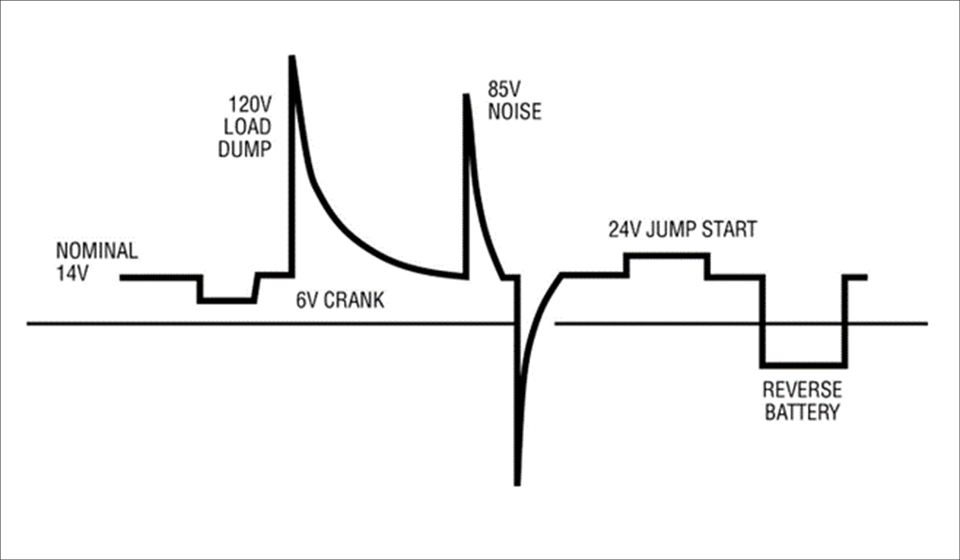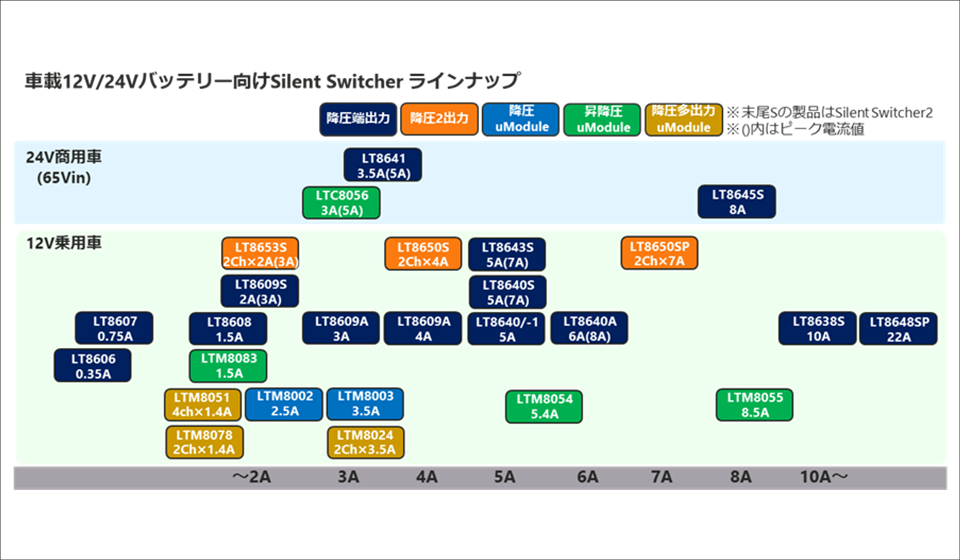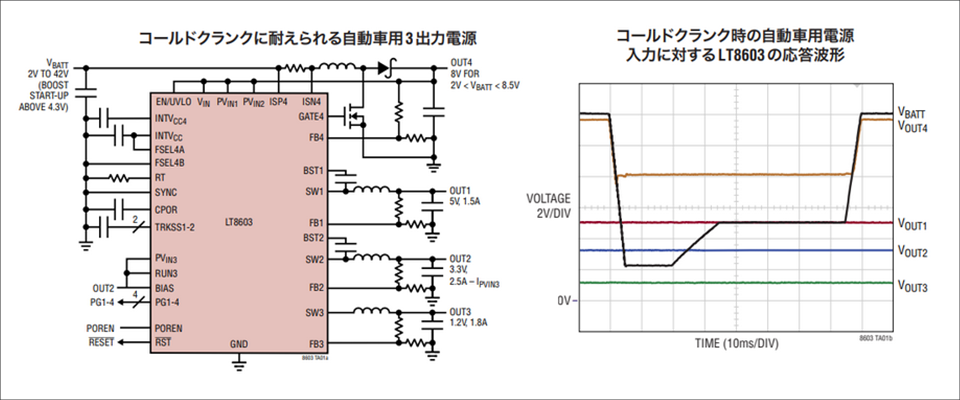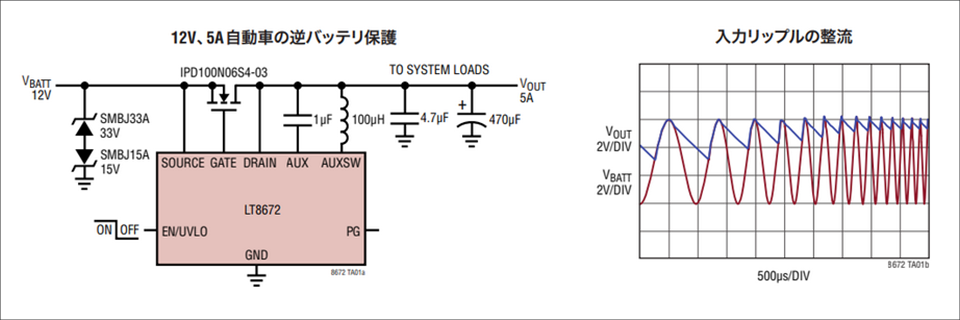Difficulty of in-vehicle +B connection
In the power line of the vehicle battery that drives the ECU, there are several events that cause the output to fluctuate greatly.
Typical examples include load dump, cold crank, reverse connection, and jump start.
For more information, see the Analog Devices article Distilled Automotive Electronics Design.

A load dump is a surge caused by a charging car battery being disconnected from the alternator. Voltages as high as 100V can be generated if unsuppressed. In the latest vehicles, the voltage is clamped to 35V by a rectifier diode with sufficient avalanche resistance, but even so, it takes about 400ms to reach several times the normal voltage.
Please refer to the following for reproduction of the load dump by LTSPICE.
Silent Switcher series for automotive batteries with large output fluctuations
Jump starting is also a case where high voltage occurs. In a tow truck, it is a technique to effectively recover the battery by connecting two batteries in series, but it is necessary to withstand a voltage of 28V, which is twice the normal voltage, for several minutes.
On the other hand, cold crank is a phenomenon in which the battery voltage drops significantly when the starter motor is driven when the battery and engine are cold. LV124 definition goes down to 3.2V. Also, if a diode is used as reverse polarity protection, an additional voltage drop will occur.
Power supply ICs with a wide input range are required to support automotive batteries with such large output fluctuations. Analog Devices has released a wide range of products that withstand 42V for 12V batteries and 65V for 24V batteries. Figure 2 maps the Silent Switcher series, which features low EMI, on the axes of supported battery and load current.

Also, in some cases, a step-up or buck-boost power supply is required in the first stage to cope with cold crank. The LT8603 is a quad output product with a boost or SEPIC type buck-boost controller for space-saving designs in systems requiring multiple power rails.

Ideal diodes required for power supply lines of automotive batteries
In the power supply line of the vehicle battery, it is necessary to assume the case that the battery is accidentally connected in the opposite direction. Normally, a blocking diode is placed in series to protect this. However, the voltage drop caused by the diode reduces system efficiency and input voltage. For systems that cannot tolerate this, a solution called an ideal diode works.
The ideal diode controls the Nch FET to keep the voltage drop small and make it behave like an ideal diode. Voltage drop can be made smaller compared to configuring with Pch FET. See below for more information on ideal diodes.
In addition, AC ripple may be superimposed on the battery voltage due to disturbance. These are the effects of alternators and the effects of switching high current loads. ISO 16750 and LV 124 assume an AC ripple with a maximum frequency of 30kHz and a maximum amplitude of 6Vp-p. In this case, using a diode would not be fast enough.
The LT8672 ideal diode can reject AC ripple by controlling the FET with a high frequency gate pulse up to 100kHz.

In automotive applications, it is essential to build a safe and robust system against various power supply fluctuations. Analog Devices' solutions like the ones introduced here can simplify your design and save you time.
Inquiry
In this article, we introduced the difficulty of +B connection in power supply design for automotive applications. For more information, please contact us below.
Analog Devices Manufacturer Information Top
If you want to return to Analog Devices Manufacturer Information Top, please click the button below.
